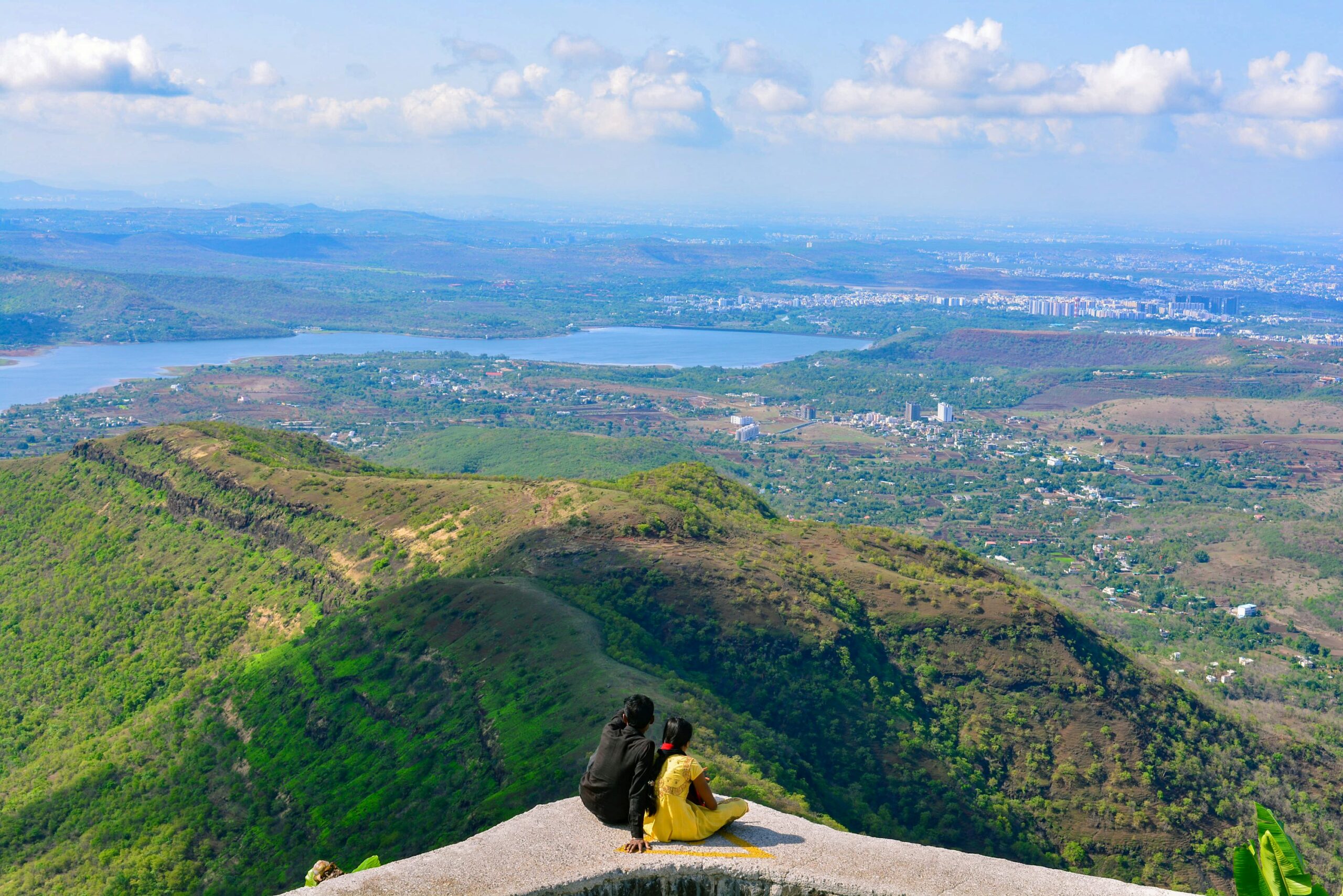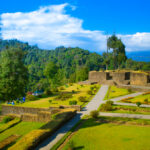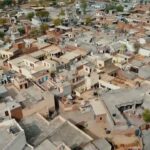Now Reading: Top 10 Best Places to Visit in Bhandara for Nature, History & Spirituality
-
01
Top 10 Best Places to Visit in Bhandara for Nature, History & Spirituality

Top 10 Best Places to Visit in Bhandara for Nature, History & Spirituality
1. Maha Samadhi Bhumi

The Buddha Dharma revealed its wisdom (Pannya) and compassion (Metta) teachings in India more than 2500 years ago then spread across its territory. The spiritual tradition of Buddhism reached its peak existence across 1700 years before disappearing from the Indian land. Pannya Metta Sangha stands as an organization that emerged to revive Buddhism and strengthen its reach while providing education and cultural programs together with religious services for socially and economically disadvantaged communities.
The establishment of Mahasamadhi Bhoomi began in Ruyad, Tah during 1987. Pauni, District Bhandara, Maharashtra. The town of Pauni maintained its status as an important Buddhist cultural center during the period of Emperor Ashoka because of its strong Buddhist heritage. Since its foundation Mahasamadhi Bhoomi has acquired status as the main venue for Dhamma Mahotsav which welcomes thousands of devout followers yearly to honor Buddhism.
The Mahasamadhi Bhoomi Maha Stupa received its official opening on February 8th 2007 at the Wainganga River location. People from all religious backgrounds around the world visit this monument and numerous monks make their way to experience its power which represents the revival of Buddhist practices in India. Every Poornima new moon day combined with Amavasya full moon day finds numerous devotees converging at this site to worship and meditate and experience spiritual growth.
The Buddhist sculpture masterpiece of India finds its pinnacle expression at Mahasamadhi Bhoomi. Visitors experience deeply reverent feelings when viewing the Stupa complex because it displays complex carvings that depict Buddha’s important life events. Buddhists together with other spiritual visitors make the site a main religious destination because it exists in a peaceful environment.
2. Rawanwadi Dam

The Rawanwadi Dam Irrigation Project serves as an essential irrigation structure which operates under the official title “Rawanwadi Dam, D – 04708” and supports Bhandara District in Maharashtra. Building work for Rawanwadi Lake (Rawanwadi Talav) began in 1960 apart from other irrigation projects launched by the Government of Maharashtra.
- Catchment Area: Data not available
- Storage Capacity:
- Maximum/Gross Storage Capacity: 6.9 MCM
- Live Storage Capacity: 8.75 MCM
Importance and Uses
Rawanwadi Dam supports irrigation requirements by providing water for nearby farming lands although its primary use lies in irrigation functions. Inside the storage area the collected water functions as the backbone of agriculture for the water-saving region of Maharashtra.
A Natural Tourist Attraction
Rawanwadi Lake has established itself as a tourist attraction beside its irrigation functions because of its peaceful surroundings and hilly landscape. Natural lovers together with photographers and recreational visitors choose this serene spot for their picnics because of its pleasant forest surroundings and quiet waters. Its natural appeal combines with the lovely surroundings to provide travelers opportunities to sail while they keep an eye out for birds and participate in outdoor activities.
Visit Rawanwadi Dam
- Nature enthusiasts will find everything they need at the dam because it provides stunning landscape views encircled by hills and vegetation.
- This site provides an outstanding location to enjoy family get-togethers alongside other groups because of its quiet surroundings.
- The scenic area formed from water and forests and hills presents itself as a romantic photographic sight.
- The water levels determine whether visitors can participate in recreational activities in this area.
Best Time to Visit
Visitors should plan their excursion to Rawanwadi Dam during the months of October through March because the weather is favorable and everything turns green after the monsoon season. The lake appears its prettiest during June through September monsoon but guests need to verify water conditions before their visit.
3. Umred Karhandla Wildlife Sanctuary

As a biodiverse location in Maharashtra Umred Karhandla Wildlife Sanctuary exists 58 km from Nagpur while it lies 60 km from Bhandara. As an essential habitat for different floral and faunal species the sanctuary extends through Pauni Tehsil of Bhandara District together with Umred Kuhi and Bhivapur Talukas of Nagpur District. An ecological pathway connects the sanctuary to the significant Tadoba Andhari Tiger Reserve through different forest corridors which lead to the Wainganga River.
The breeding population of tigers at Umred Karhandla Wildlife Sanctuary includes dispersing tigers which originated from Tadoba. Wild dogs (Dhole) together with gaur (Indian Bison) and leopards and sloth bears and Pangolins constitute the significant species of Umred Karhandla Wildlife Sanctuary.
Large Mammals:
- Tigers (Key attraction of the sanctuary)
- Gaur (Indian Bison)
- Wild Dogs (Dhole)
- Leopards
- Sloth Bears
- Rare and Nocturnal Species:
- Flying Squirrels
- Pangolins
- Honey Badgers
Birdlife & Reptiles:
- The sanctuary houses various bird species among which it contains both resident breeding families and migratory populations.
- Crocodiles snakes along with monitor lizards make up the reptiles present in this area.
Geographical Boundaries and Landscape
- Several natural and artificial features determine the border of this sanctuary.
- Northeast: Wainganga River and Gose Khurd Dam
- The wildlife sanctuary extends from Bhiwapur Town together with State Highway 9 through south boundaries.
West: Umred Town
- Northwest: A 10 km long hill range (600-800 m high)
- Connectivity to Other Wildlife Reserves
- The position of Umred Karhandla Wildlife Sanctuary makes it accessible to various important wildlife reserves throughout Maharashtra.
- Tadoba-Andhari Tiger Reserve – 40 km north
- Nagzira Wildlife Sanctuary – 50 km southwest
- Pench Tiger Reserve – 80 km northwest
Umred Karhandla Wildlife Sanctuary
- Nature enthusiasts will discover the finest natural tiger sighting experience at this location.
- The sanctuary offers the opportunity to see uncommon wild animals such as honey badgers and pangolins.
- The sanctuary presents a spectacular combination of forested areas with their accompanying rivers together with rolling hills and rolling grasslands.
- Wildlife enthusiasts along with photography lovers find Umred Karhandla Wildlife Sanctuary to be their perfect destination.
Best Time to Visit
The best period to explore Umred Karhandla Wildlife Sanctuary extends from October through June. Wildlife sightings are best during winter along with early summer yet entry to the sanctuary becomes limited during the monsoon season (July–September) when the forest turns green.
4. Gosikhurd Dam

The Gosikhurd Dam operates as the Indirasagar Dam to serve as an important project for irrigation and hydroelectric production in Maharashtra India. Through its water supply capacity the Gosikhurd dam supports irrigation demands of the farmers in Nagpur Bhandara and Chandrapur districts which leads to enhanced agricultural production and electricity production in the territory.
History
Prime Minister Indira Gandhi performed the first groundbreaking ceremony of Gosikhurd Project on October 23rd 1984. The project team embarked on major rehabilitation efforts while buying land to build new facilities which would provide irrigation services and nearby energy needs. The project submerged 249 villages so that families agreed to move into newly constructed areas for the buildup of the dam.
Engineering Marvel
The Gosikhurd Dam maintains its status as a concrete gravity dam which displays several notable structural aspects.
- Height: 92 meters
- Length: 653 meters
- Type: Concrete gravity dam
- Purpose: Irrigation and hydroelectric power generation
The extensive infrastructure development supplies steady water sources to many thousands of regional farmers who now experience improved agricultural production.
Significance and Benefits
The Gosikhurd Dam functions to achieve objectives that extend well past irrigation functions.
- Through irrigation services the dam transports water to agricultural spaces totalling thousands of hectares which lead to improved farming results while supporting local farmers.
- The reservoir facilities electricity generation to power both local villages and industrial establishments.
- The water management system controls water distribution in neighboring rivers so both floods and drought become less frequent.
- The water resource management from the dam leads to economic expansion through improved water access together with job creation and enhanced basic facilities development.
Challenges and Future Prospects
While the Gosikhurd Dam stands to provide numerous advantages it confronts multiple obstacles such as citizen rehabilitation issues as well as cost elevation and environmental problems. The government continues its initiative to boost operational efficiency while developing sustainable water management methods which will benefit future population needs.
5. Koka Wildlife Sanctuary

Koka Wildlife Sanctuary emerged as a modern protected wildlife reserve positioned approximately 20 km from Bhandara with a distance of 60 km from Nagpur. The sanctuary obtained its sanctuary designation in 2013 to protect different plant and animal species while sustaining biodiversity.
Wildlife and Biodiversity
With an extensive 92.34 square kilometer area the sanctuary attracts many tigers and leopards alongside various herbivorous creatures. The area provides a shelter for multiple herbivore species among others.
Through its function as a sanctuary Koka protects animals from the Nagzira and New Nagzira Sanctuaries which benefits regional ecological sustainability.
Safari Experience
Visitors at Koka can experience thrilling jungle safaris by using the 44 km planned trails. The safari operates at:
- Morning: 6:30 AM – 10:30 AM
- Evening: 3:00 PM – 6:00 PM
- Guests need to be aware that Koka closes to visitors on all Thursdays.
Best Time to Visit
November through June marks the most excellent period to visit Koka Wildlife Sanctuary because wildlife perspectives achieve their peak during this time.
related articles : Top 10 Best Places to Visit in Beed for History, Nature & Spirituality



























